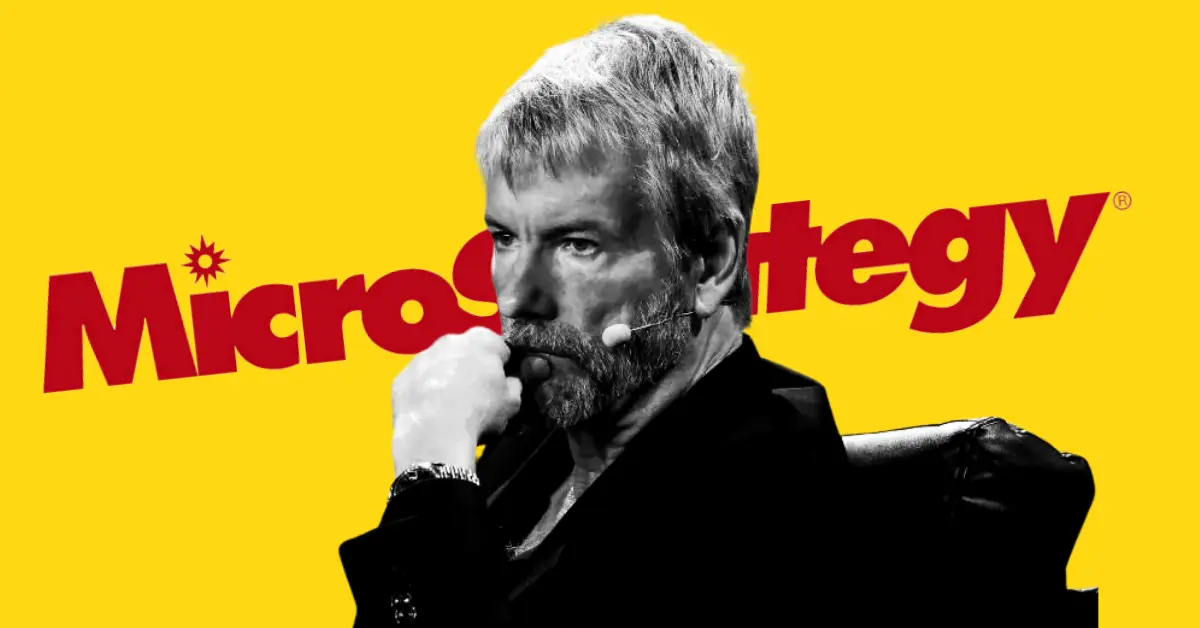
MicroStrategy trades at a significant premium to its Net Asset Value (NAV), making it an expensive way to gain Bitcoin exposure.
MSTR offers less Bitcoin exposure per dollar invested than buying BTC directly.
As a C-Corp, MSTR's gains are subject to double taxation, unlike more tax-efficient investment vehicles like Bitcoin ETFs.
MicroStrategy is often seen as a go-to option for gaining leveraged Bitcoin exposure, almost like a shortcut to owning BTC. But what if this popular choice isn’t all it’s cracked up to be?
Crypto expert Alex Kolicich offers a fresh perspective on why MSTR may not be the smartest route to take for Bitcoin exposure. Let’s dive into his insights and discover why some investors might want to reconsider their strategy.
MSTR: Trading at a Premium for Less Exposure
Currently, MSTR is priced at $386.42, reflecting a 10.96% increase in the past 30 days
However, Kolicich believes that MicroStrategy is overpriced as a Bitcoin proxy, trading at a 140% premium to its net asset value (NAV).
Bitcoin Exposure and Pricing Issues
MicroStrategy holds over 439,000 BTC, worth about $45.78 billion, or around 2.09% of Bitcoin’s total supply. This translates to an NAV of roughly $177.60 per share of Bitcoin. Despite this, Kolicich points out that for every $1 spent on MSTR, investors get less than $0.45 worth of Bitcoin exposure. In his view, buying MSTR provides less exposure to Bitcoin compared to simply purchasing BTC directly.
Convertible Debt: Shorting Volatility and Diluting Exposure
Kolicich also highlights the issue with MicroStrategy’s strategy of issuing convertible debt. This tactic effectively reduces volatility by selling a bond and a call option. However, unlike traditional call options, MicroStrategy doesn’t offer any leverage on the invested dollars.
Kolicich warns that when Bitcoin prices rise, the conversion of this debt dilutes the Bitcoin exposure for MSTR shareholders.
Double Taxation Risk
As a C-Corp, MicroStrategy’s structure is different from that of ETFs, and Kolicich points out a major drawback: the gains of a C-Corp are generally subject to double taxation — both corporate and personal taxes. This makes MSTR less tax-efficient compared to other investment options for Bitcoin exposure.
A Better Alternative: BITX
Kolicich suggests that products like BITX offer a more efficient and cost-effective way to gain Bitcoin exposure. BITX provides 2x leveraged Bitcoin exposure without trading at a premium to NAV, unlike MSTR.
Kolicich urges investors to carefully consider MSTR before investing. With its premium pricing, tax inefficiency, and limited Bitcoin exposure, alternatives like BITX could offer a smarter and more profitable way to invest in BTC.







